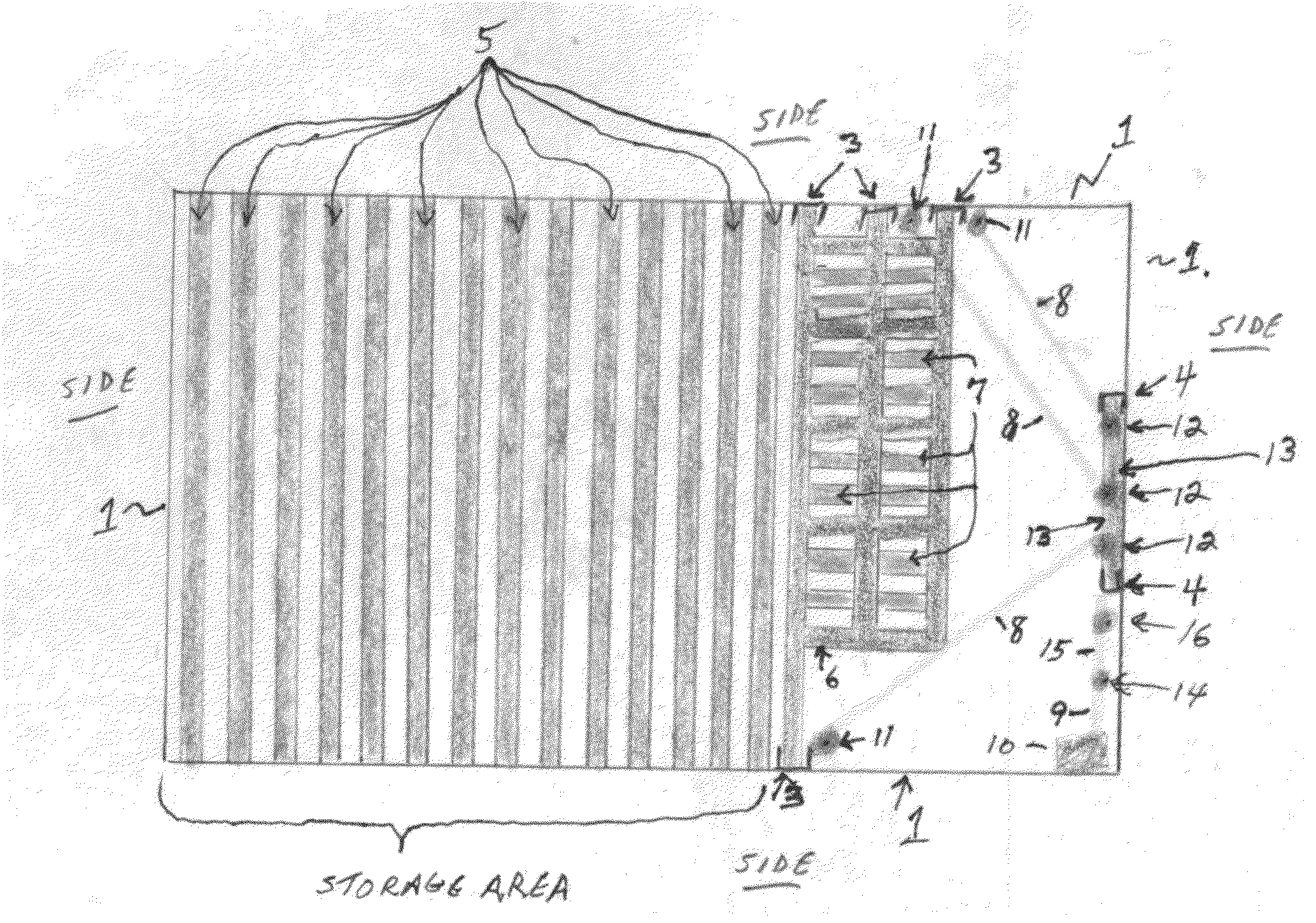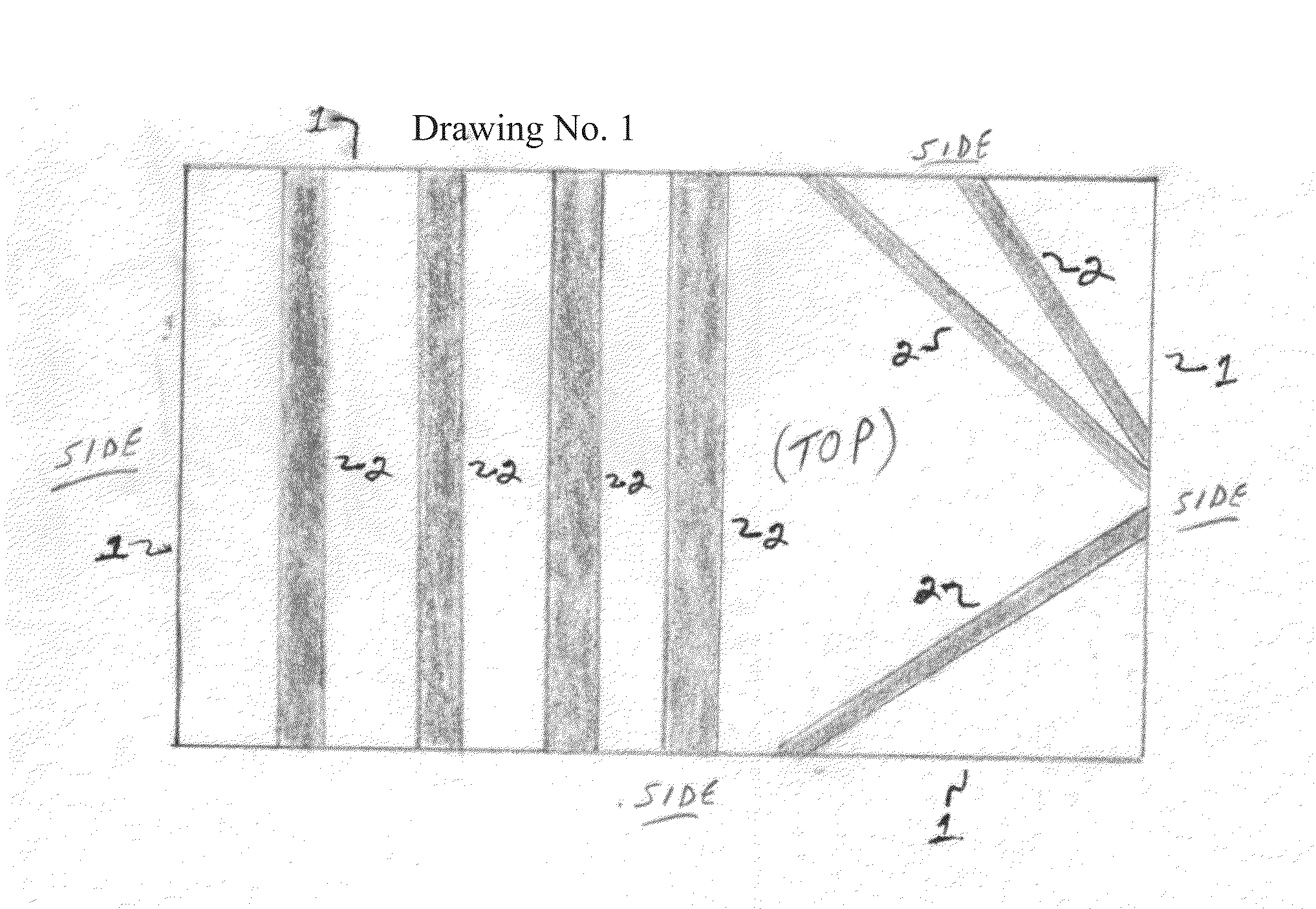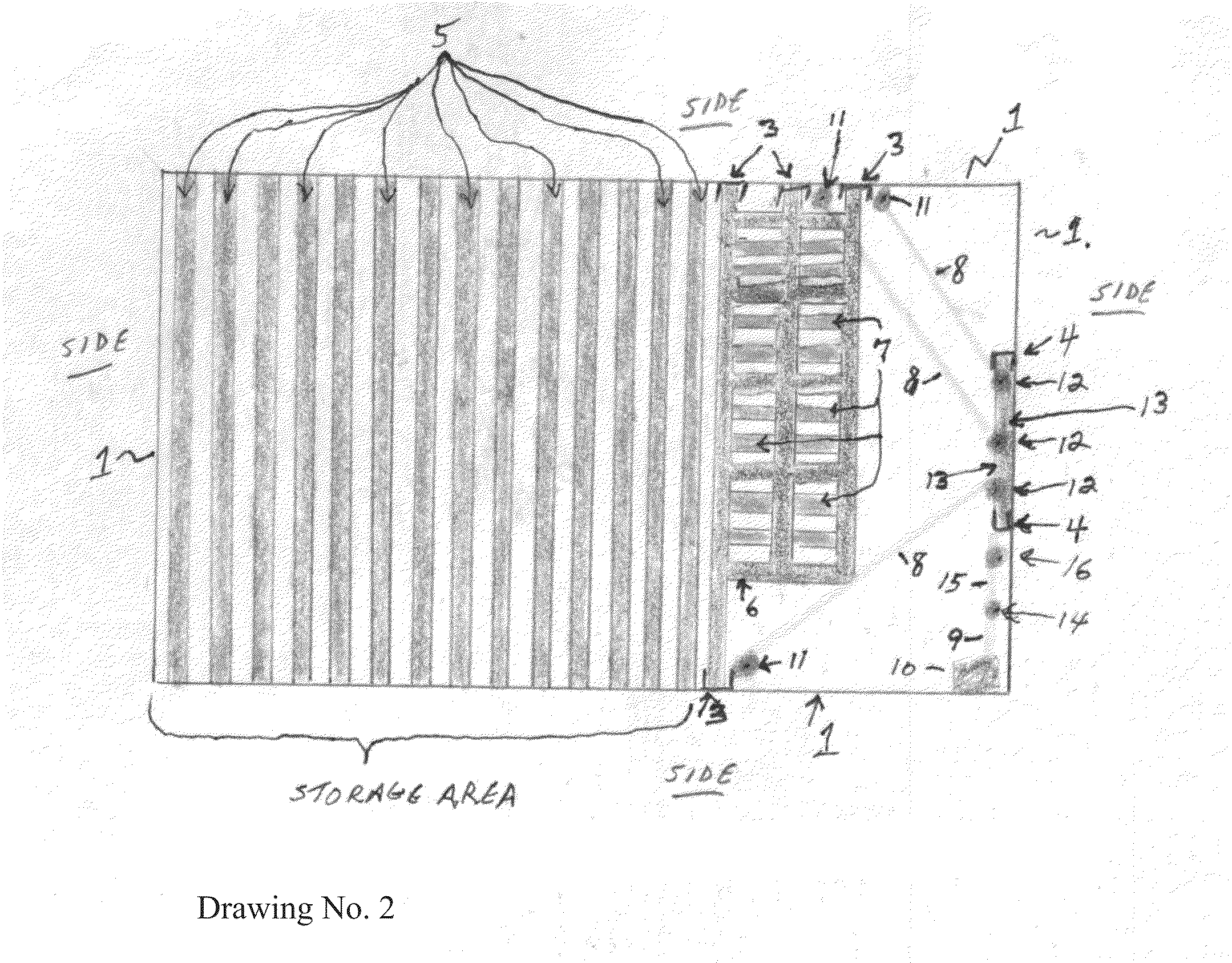Lift And Storage Racking Apparatus For Human Remains
a technology for racking apparatus and human remains, which is applied in the direction of lighting and heating apparatus, domestic cooling apparatus, funeral devices, etc., can solve the problems of the inability to efficiently store human remains, and the inability to expand the capacity of an existing temperature controlled spa
- Summary
- Abstract
- Description
- Claims
- Application Information
AI Technical Summary
Benefits of technology
Problems solved by technology
Method used
Image
Examples
Embodiment Construction
[0027]The Lift and Storage Racking Apparatus for Human Remains is comprised of a Frame (Fig.Ref. 1); a Lift (Fig.Ref. 6) to hold, load and unloading human remains; at least one level of a plurality of parallel rollers (“Storage Rollers”—Fig.Ref. 5) to store the human remains; a Parallel Movement Mechanism (Fig.Ref. 13) to maintain the Lift parallel to the Storage Rollers as the Lift is moved; and a means to raise and lower the lift.
[0028]The Lift and Storage Racking Apparatus for Human Remains's Frame (Fig.Ref. 1) is a structure which provides physical support for each parallel level of Storage Rollers within the Lift and Storage Racking Apparatus for Human Remains, as well as a physical support and connection for the means to raise and lower the Lift; including the physical support and connection for the Parallel Movement Mechanism. The Frame is comprised of high strength materials, including but not limited to steel, metal, or other strong material pieces which can be welded or se...
PUM
 Login to View More
Login to View More Abstract
Description
Claims
Application Information
 Login to View More
Login to View More - R&D
- Intellectual Property
- Life Sciences
- Materials
- Tech Scout
- Unparalleled Data Quality
- Higher Quality Content
- 60% Fewer Hallucinations
Browse by: Latest US Patents, China's latest patents, Technical Efficacy Thesaurus, Application Domain, Technology Topic, Popular Technical Reports.
© 2025 PatSnap. All rights reserved.Legal|Privacy policy|Modern Slavery Act Transparency Statement|Sitemap|About US| Contact US: help@patsnap.com



